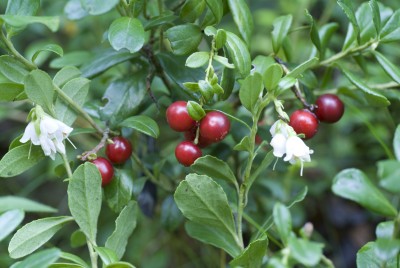Lingonberry - Vaccinium vitis-idaea

Common Names: Lingonberry, Cowberry, Mountain Cranberry, Foxberry, Vaccinium vitis-idaea, Northern Cranberry, Alpine Cranberry, European Cranberry, Redberry, Latin: Vaccinium vitis-idaea, Swedish: Lingon, Russian: Brusnika
Latin Name: Vaccinium vitis-idaea
Origin: Asia, Europe, South America
Short Introduction
Lingonberry thrives in moist, acidic soil and prefers a partially shaded location. By maintaining these three growing conditions, it can even be cultivated in a small pot. You can expect two harvests of its sweet-tart red berries each year—first at the end of May and again at the turn of September to October, when the fruit is at its tastiest.
Detailed Description
Whether you’re a man or a woman, it’s always wise to keep lingonberry on hand!
Botanical Information
Lingonberry (Vaccinium vitis-idaea) is a low-growing shrub recognized by its leathery leaves—shiny and dark green on top, lighter with brown dots on the underside. This characteristic is a key identifier for the plant. In spring, the lingonberry produces racemes of delicate flowers, which gradually mature into shiny red berries.
Origin and Distribution
Lingonberry is well adapted to altitudes up to 1,000 meters (3,280 feet). It thrives in temperate climates and is predominantly found in the forests of Central and Northern Europe, Asia, and North America. Thanks to its frost resistance, the plant’s range can even extend beyond the Arctic Circle.
Usage / Dosage
Lingonberry is primarily valued for its support of urinary tract health, due to its natural disinfectant properties and mild antibiotic effects. It is commonly used both to prevent urinary tract infections and at the first sign of painful urination. Because of its high tannin content, lingonberry also serves as a traditional remedy for diarrhea and minor skin wounds, with astringent effects that help tighten tissues. The berry can be beneficial for women with painful menstruation, as its magnesium content may help to relax uncomfortable uterine cramps. Lingonberry is also associated with supporting immune function and providing antioxidant protection. Additionally, it can be a valuable supplement for maintaining healthy blood sugar levels.
Active Compounds
The main bioactive compound in lingonberry is arbutin. The plant also contains notable levels of tannins, lending its fruit a distinctively astringent flavor, as well as magnesium, which is known for its antispasmodic properties.
Traditional Dosage
In herbal medicine, the fruit and leaf of lingonberry are used most frequently. Lingonberry leaves are especially popular in herbal tea blends. However, extracting the most active compounds via hot water can be challenging, as boiling may reduce the effectiveness of tannins—which are valued for their anti-diarrheal actions. The best method to prepare a cold infusion is to steep 15 grams of crushed lingonberry leaves in 500 milliliters of cold water with 15 milliliters of wine vinegar for 10 hours. Consume 100 milliliters after meals, four times daily. This infusion offers disinfectant, anti-inflammatory, and anti-diarrheal benefits. A fine powder made from dried lingonberry fruit provides similar effects—a small pinch is taken three times daily after meals.
Alternatively, lingonberry leaves can be soaked in cold water for at least 8 hours, then briefly brought to a boil and immediately removed from heat. There’s also a quicker, less effective method: pour 1/4 liter of boiling water over 2 teaspoons of leaves, let steep, and drink.
Lingonberry is not recommended for pregnant or breastfeeding women. The maximum duration of use is 2 months consecutively, with a limit of 4 months per year.
